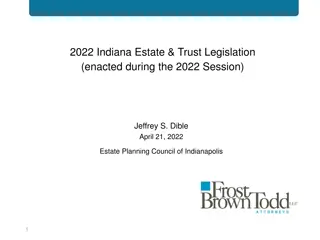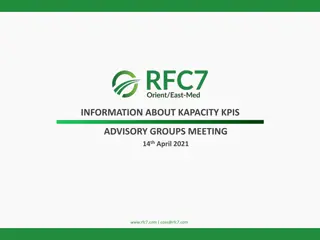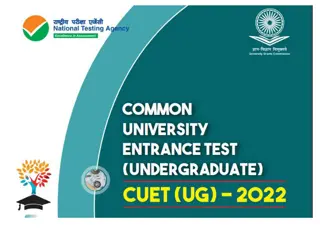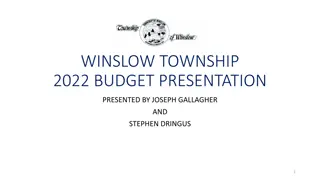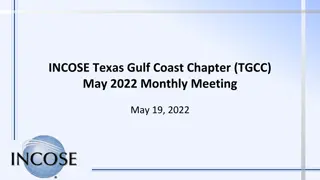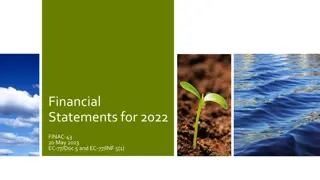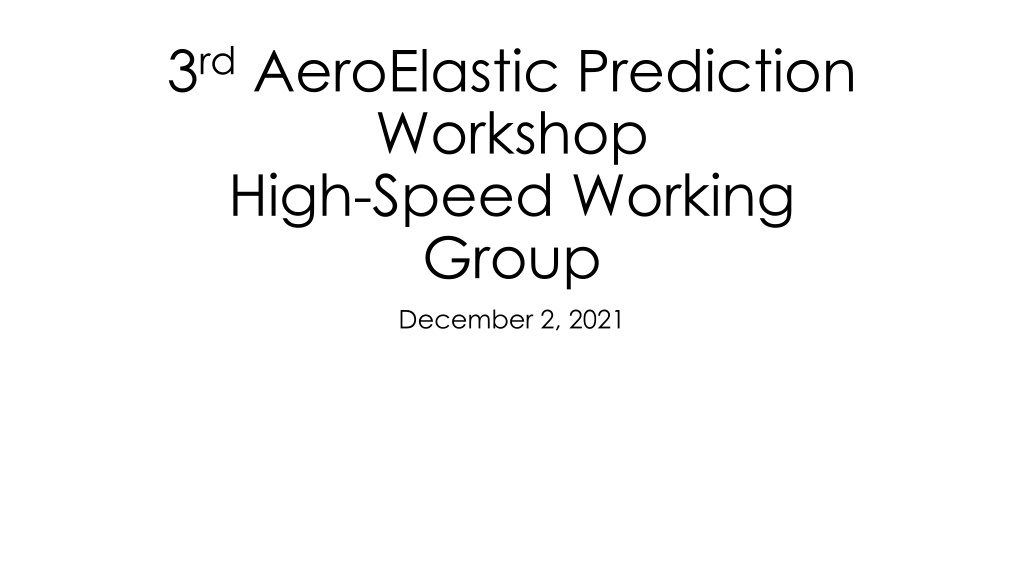
Aeroelastic Prediction Workshop for High-Speed Applications
Explore the latest advancements in high-speed fluid-structure interaction predictions at the 3rd Aeroelastic Prediction Workshop. Join discussions on model fidelity, experimental feedback, and future experiments to enhance test and analysis agreement. Discover the workshop schedule, structure, and selected experiment configurations to address challenging fluid physics and structural responses.
Download Presentation

Please find below an Image/Link to download the presentation.
The content on the website is provided AS IS for your information and personal use only. It may not be sold, licensed, or shared on other websites without obtaining consent from the author. Download presentation by click this link. If you encounter any issues during the download, it is possible that the publisher has removed the file from their server.
E N D
Presentation Transcript
3rdAeroElastic Prediction Workshop High-Speed Working Group December 2, 2021
Objectives Assess state of the art for high-speed FSI predictions Develop guidelines / metrics for: Coupling frequency - characterize degree of non-linear interaction Model fidelity, e.g. panel methods, RANS, HRL Feedback to identify gaps in experiments What needs to be measured in future experiments to get better agreement between test & analysis And vice-versa
Workshop Schedule SciTech 2022: Workshop announcement Announcements through other venues to increase participation Monthly meetings to address participant questions Oct 2022: Participants submit results SciTech 2023: Workshop to review predictions and lessons learned Present papers at subsequent conferences
Workshop Structure Plan is for blind participation Experimental data made available after workshop Inputs provided to characterize structure, WT, ICs, BCs, etc. Similar to AePW2 and other AePW3 working groups Anticipate participants using multi-fidelity models Allow participants to build own meshes/models Geometries are relatively simple Provide meshing guidelines
Two Experiment Configurations Selected for Workshop Represent two types of structural configurations Metallic skin panel for reusable hypersonic vehicle Control surface Both cases Involve shock boundary-layer interaction Well characterized Mandatory and optional cases for each Neither case involves significant thermal response Fluid physics and dynamic structural response are challenging Incorporate thermal effects in future workshops
Overview of Workshop Cases AFRL/SSC clamped thin panel (Mach 2) No shock impingement: Periodic post-flutter response (baseline) and chaotic post-flutter response (optional) Attached SBLI (4 wedge): periodic response (optional) UNSW HyMAX cantilever plate (Mach 6) 2 degree case is laminar (mandatory) 10 degree case is transitional (optional) Oscillating wedge Challenge case (optional) Prescribed motion of oscillating shock generator from 2 to 10
Overview: AFRL/SSC RC-19 Thin Panel Model: Thin steel panel (254x127x0.635 mm) constructed by machining a pocket into the back of steel block (305x152x12.9 mm) Facility: AFRL RC-19 continuous wind tunnel Flow Conditions: No SBLI and attached SBLI generated by 4 wedge Mach 1.92 0.02 T0= 295.95 2.25 K, P0= 345.92 1.12 kPa Available Information/Data: Inputs: Tunnel/nozzle geometry, total flow conditions, cavity pressure, thermocouple (frame and panel) Flat, rigid panel observations: shock angle (high-speed Schlieren), turbulent BL thickness (pitot probe) Thin panel observations: Post-processed, full-field 3-D digital image correlation (DIC) Comprehensive slide deck: overview of all conditions, setup data, response data, and details on post-processing
AFRL/SSC RC-19 Journal Publications Overview of experimental setup and results: Beberniss, T.J., and Ehrhardt, D.A., Visible Light Refraction Effects on High-Speed Stereo Digital Image Correlation Measurement of Thin Panel in Mach 2 Flow, Experimental Techniques 2021. Doi: 10.1007/s40799-020-00408-2. Brouwer, K.R., Perez, R.A., Beberniss, T.J., Spottswood, S.M., Ehrhardt, D.A., Experiments on a Thin Panel Excited by Turbulent Flow and Shock/Boundary-Layer Interactions, AIAA Journal, Vol. 57, No. 7, 2021, pp. 2737 2752. Doi: 10.2514/1.J060114. In-house numerical analyses: Brouwer, K.R., Perez, R.A., Beberniss, T.J., Spottswood, S.M., Ehrhardt, D.A., Wiebe, R., Investigation of Aeroelastic Instabilities for a Thin Panel in Turbulent Flow, Nonlinear Dynamics, Vol. 104, pp. 3323 3346, 2021. Doi: 10.1007/s11071-021-06571-4. Brouwer, K., Perez, R.A., Beberniss, T.J., Spottswood, S.M., Ehrhardt, D.A., Evaluation of Reduced-Order Aeroelastic Simulations for Shock-Dominated Flows, Journal of Fluids and Structures, Vol. 108, 2022. Doi: 10.1016/j.jfluidstructs.2021.103429
AFRL/SSC RC-19 Experimental Campaign Motivation: Measure and study the aeroelastic response of a thin panel to turbulent flow Explore increasingly complex structural behavior Investigate impact of increasing flow complexity (i.e. SBLI) on fluid-structure interaction Flow Steel panel Available instrumentation: Discrete Static pressure port in the cavity, thermocouples on panel and frame Full-field high-speed Schlieren (rigid panel only), DIC Thin panel data acquisition: Start tunnel and allow transients to diminish Heated flow creates temperature differential which: Buckles the thin panel Decreases with time as frame heats up Modulate pcand record discrete instrumentation If observe dynamics, record ~3 seconds of DIC
AFRL/SSC RC-19 Selected Cases and Key Metrics PSD: No SBLI, periodic response (baseline, mandatory) Post-processed DIC displacement Power spectral density and oscillation amplitude at selected locations Additional full-field data: Mean surface deformation only compare for 4 wedge since near 0 without SBLI Standard deviation of deformation PSD: No SBLI, chaotic response (optional) Flow Attached SBLI, periodic response (optional) PSD Mean Deformation
UNSW HyMAX Mandatory and Optional Cases All Run Conditions are the Same Model: 2 mm thin aluminum panel, 130 x 80 mm cantilevered from rigid forebody Model geometry Configuration: shock generators tested (2 , 5 , 8 and 10 ) Response: periodic motion with evolving FSI coupling Facility: TUSQ compression-heated Ludwieg tube Data sets: limited full-field DIC, high-speed schlieren, axial midline laser line scan of displacement, strain gage, unsteady pressure (PSP, static pressure tap 10 mm from trailing edge) Conditions: Mach = 5.8 0.06 (air), test time = 200 ms T0 = 580 30 K, P0 = 968 40 kPa Tw = 300 2 K Fixed wedge angles (2 and 10 ) Larger wedge angle results in stronger shock and moves shock location upstream and results in larger separation region 2 degree case is laminar (mandatory case) 10 degree case are transitional (optional case) Instrumentation Oscillating wedge Challenge case (optional) Prescribed motion of oscillating shock generator from 2 to 10
Key Metrics for Comparison: UNSW HyMAX Cantilever Plate Focus on FSI coupling Structural quantities: 1st mode-dominated Oscillation/time history Schlieren image tracking for displacement Lase line scanner Trailing edge displacement PSD of trailing edge displacement Peak displacement PDF Aero quantities PSP surface pressure PSD of predicted pressure response Mean pressure distribution Dominate POD modes SBLI location and footprint (size and location of separation bubble) Pressure transducer time history near trailing edge Shock location (from schlieren)
Relevant Publications: UNSW HyMAX Cantilever Plate Experimental case (including simulation) Currao GM, Choudhury R, Gai SL, Neely AJ, Buttsworth DR (2020) Hypersonic Transitional Shock-Wave Boundary-Layer Interaction on a Flat Plate. AIAA Journal, 58(2), 814-829. Related experiments (including simulation) Currao GMD, Neely AJ, Kennell CM, Gai SL, Buttsworth DR (2019) Hypersonic Fluid-Structure Interaction on a Cantilevered Plate with Shock Impingement, AIAA Journal. 57(11), 4819-4834. Currao GM, McQuellin LP, Neely AJ, Gai SL, O Byrne S, Zander F, Buttsworth DR, McNamara J, Jahn I (2021) Hypersonic Oscillating Shock-Wave/Boundary-Layer Interaction on a Flat Plate. AIAA Journal, 59(3), 940-959. Experimental Facility TUSQ Buttsworth DR (2019) Ludwieg Tunnel Facility with Free Piston Compression Heating for Supersonic and Hypersonic Testing, Proceedings from 9th Australian Space Science Conference, National Space Soc., Sydney, Australia, pp. 153 162. Birch B, Buttsworth D, Zander F (2020) Measurements of Freestream Density Fluctuations in a Hypersonic Wind Tunnel, Experiments in Fluids, Vol. 61, No. 7, pp. 1 3.
Next Steps Set workshop kickoff meeting Likely a Thursday (need to select one) at 4:00 PM CT Advertise workshop Make announcement at SciTech AePW meeting Announce at relevant sessions Reach out to high-speed community
Interested Workshop Participants Industry ATA Engineering, Raytheon Government NASA, AFRL, CREATE/Kestrel, Sandia Academia UNSW - Canberra USAFA Duke University University of Maryland University of Illinois Ohio State University NC State Penn State Cal Tech


